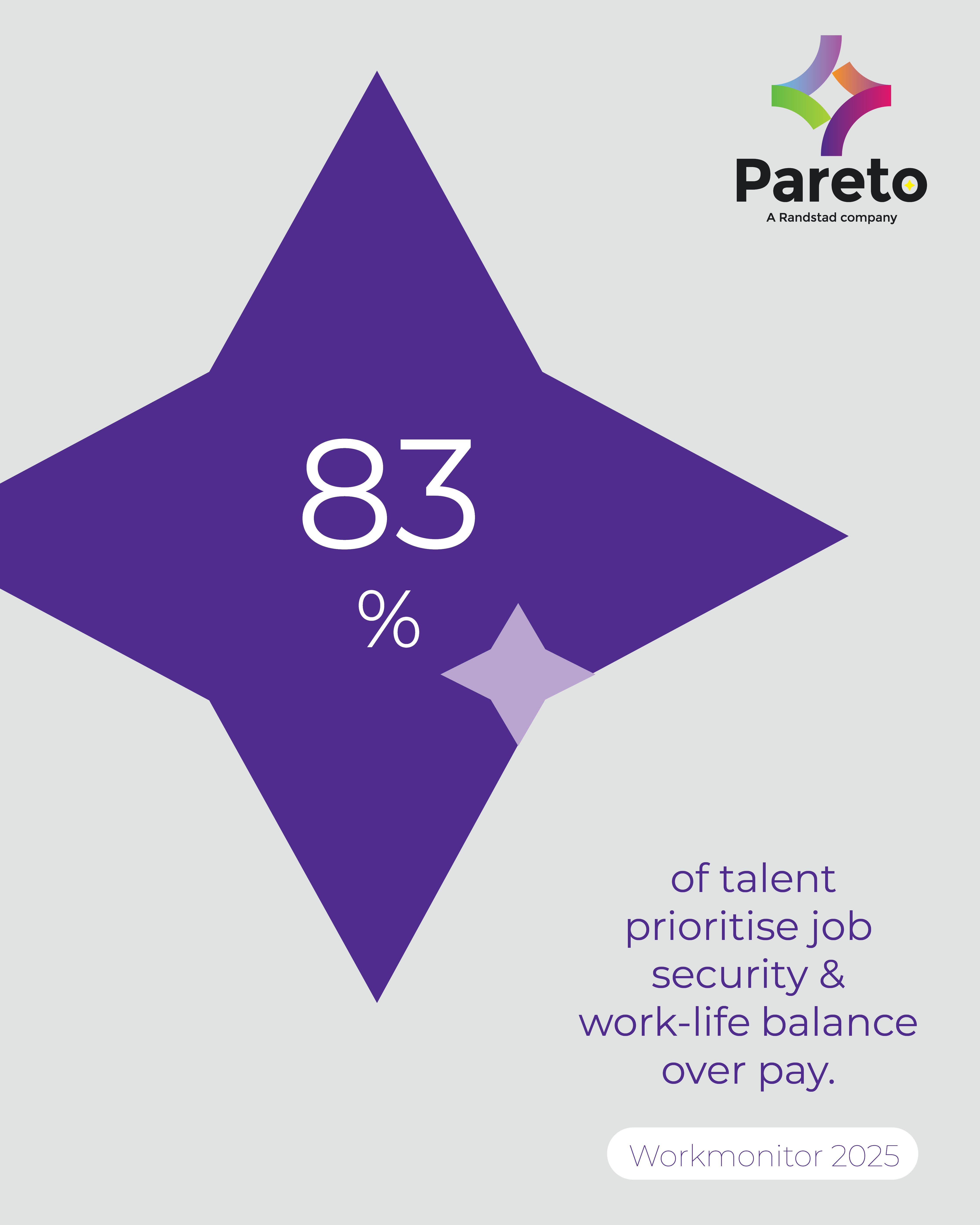
Drop off your CV
At Pareto, we go above and beyond to find the right fit for both you and a prospective employer. Taking people of high potential and placing them in positions where they can excel.
At Pareto, we go above and beyond to find the right fit for both you and a prospective employer. Taking people of high potential and placing them in positions where they can excel.
Explore the top 5 challenges Chief Revenue Officers face in 2024, from market competition to tech stack decisions. Discover strategies and how executive search can help.

By Pareto Team

Chief revenue officers play a vital role in the growth and success of businesses worldwide. They are responsible for critical areas such as sales and marketing leadership, enhancing the customer experience, and driving and developing revenue strategies. This rewarding and impactful role is crucial for organisations to grow their status in their target markets and industries.
Due to its importance, it should be no surprise that the chief revenue officer's role is not without its challenges. Therefore, this guide will explore CROs' five most prominent challenges. We’ll provide insights into various issues, from growing market competition to deciding on marketing tech stacks. We’ll also discover how executive search can help overcome these challenges.
In a market that's becoming increasingly saturated, with the emergence of new competitors and the aggression of existing ones, chief financial officers are under immense pressure to consistently surpass revenue targets and maintain growth in these markets. Battling with this situation can lead to a number of issues if not dealt with effectively:
Declining or Stagnant Sales - Increased competition makes it harder for businesses to gain and retain new customers. A weakened customer base can potentially lead to declining or stagnant sales figures.
Reduced Market Share - As competitors increasingly gain dominance in a market, a business’s share in the market could shrink. This makes it harder for a company to reach revenue targets based on the previous market share.
Cuts and Redundancies - If a business fails to make profits, it may be forced to implement cost-cutting measures such as redundancies or scaling back operations in extreme circumstances.
Pressure from Investors - Missing profit targets can lead to a decline in stock prices and pressure from investors to make improvements and changes.
Employee Morale - Missing targets can demoralise the workforce and increase the pressure on vital teams such as sales and marketing to turn things around.
Here are key strategies that a chief revenue officer can implement to overcome this challenge:
Invest in Training and Development - By investing in sales training, chief revenue officers can equip sales teams with elevated skills in key areas such as negotiation, product knowledge, and account management, supporting the business in staying ahead of the competition.
Differentiate Value Proposition - Clearly articulating a product or service's unique value proposition can help a business stand out in a crowded market. Highlighting benefits and competitive advantages that resonate with a target audience and address their pain points will increase the likelihood of consistent sales conversions.
Constantly Review Competitor Activity - Staying informed about competitor pricing, strategies, and product and service offerings helps chief revenue officers adjust their team’s sales tactics. Also, identifying gaps in the market enables businesses to capitalise on opportunities to gain a competitive advantage.
Strengthen Customer Relationships - Chief revenue officers can support businesses by prioritising building strong, long-term relationships with existing customers. They can focus on developing exceptional customer service, proactive communication, and personalised experiences to drive loyalty and retention.
Assess and Adjust Performance - Chief revenue officers should support this by establishing clear sales performance metrics and regularly assessing progress towards revenue targets. They should also analyse sales data to identify areas for improvement and make data-driven adjustments to sales strategies as needed.
Modern buyers are more informed and empowered than ever before. They have access to a wealth of information online, enabling them to conduct their own research and expect a personalised sales experience. Traditional sales tactics focusing on features and benefits are no longer as effective, and customers expect a higher level of service (1 in 3 customers abandon a brand they love after just one bad experience).
Key behavioural buyer behavioural changes include:
Focus on Customer Experience - Today, customers value a positive and seamless customer experience throughout the buyer journey. Chief revenue officers must ensure their teams are prepared for in-depth and informed conversations addressing specific customer needs.
Leverage Social Selling and Digital Channels - Optimising the business’s online presence effectively engages modern buyers. Social selling tactics, such as sharing valuable content, actively engaging with professional networks, and building thought leadership on platforms like LinkedIn, can significantly enhance customer relationships and drive sales.
Drive a Continuous Learning Culture - This involves being open to pivoting strategies and experimenting with new tactics when current approaches prove ineffective. Staying informed about industry trends, emerging technologies, and shifts in buyer behaviour is vital for anticipating and responding to market changes. In addition, investing in ongoing training ensures that CFOs and their teams remain aligned with customer expectations.
Tailored Solutions and Personalised Approach - Businesses must conduct thorough consumer research to understand customers' unique challenges, needs, and preferences. Using data analytics and customer insights enables effective segmentation, which allows for creating personalised offerings that resonate with each customer type and increase the chances of a sale.
Balancing short-term gains with long-term sustainability is vital for business success. Businesses must find a balance between immediate operational efficiency and profitability and long-term growth and innovation.
Short-term goals, such as monthly targets and cost-cutting measures, are crucial for maintaining competitiveness. While long-term goals, including market growth, building the company brand, and improving organisational culture, don't produce immediate returns, they ensure future competitiveness, consistent growth, and adaptability in changing markets and industries.
Chief revenue officers play a crucial role in driving this balance by conducting the following:
Strategic Revenue Planning - Chief revenue officers develop and implement revenue strategies that align with the business's long-term mission and vision while still achieving short-term financial targets. This planning includes setting realistic sales goals considering future growth opportunities and market trends.
Using Data Analytics - Using data analytics, chief technology officers can provide insights into market conditions, emerging trends and challenges, and changing customer behaviours. This information helps the business make data-driven, informed decisions that support short- and long-term strategies.
Driving Cross-Department Collaboration - Chief revenue officers can facilitate collaboration between teams in areas such as sales and marketing to ensure that short-term goals align with long-term targets like market expansion. This close collaboration ensures a cohesive strategy that drives sustainable growth and on average, sees up to 38% higher sales win rates.
Effective Resource Allocation - Chief revenue officers can prioritise resource allocation to balance immediate profit-generating activities with strategic investments in future growth areas, such as new technologies, product development, and expansion into new markets.
Implementing Customer Retention - Chief revenue officers can implement customer retention strategies focusing on customer experience and loyalty, ensuring that short-term sales contribute to building positive long-term customer relationships and repeat business.

With continuous pressure to meet business targets and drive company growth, effectively managing and optimising a sales pipeline is crucial for a chief revenue officer. Therefore, a CRO must implement a clear and well-defined strategy to ensure a flow of opportunities and leads through the sales pipeline. Here are some of the key strategies that a chief revenue officer can implement to drive sales performance:
Leverage CRM Tools - A robust CRM system is vital for managing and tracking the sales pipeline. It enables the chief revenue officer to capture and analyse data on leads, opportunities, and customer interactions, empower their sales team to make data-driven decisions, identify bottlenecks, and allocate resources efficiently.
Use Data Analysis for Pipeline Management - Data analysis is essential for effective sales pipeline management. It enables a chief revenue officer to identify strengths and weaknesses in the sales process, optimise strategies, and forecast revenue more accurately. By segmenting leads and tailoring sake efforts, the CRO can proactively enhance conversion rates and address customer needs.
Have a Criteria for Lead Scoring - Lead scoring entails assigning values to leads based on predefined criteria that reflect their likelihood of converting into customers. These criteria may include factors such as company size, budget, level of interest, and engagement with marketing efforts on the most promising prospects, thereby increasing the likelihood of closing deals.
Overcoming and Reducing Stalled Deals - Stalled deals are a frequent challenge in sales pipeline management. However, a vigilant chief revenue officer can promptly identify and address these issues. By analysing the causes of stalled deals, including pricing concerns, lack of engagement, or internal obstacles, the CRO can develop strategies to re-engage prospects and advance the deals. These strategies can involve providing additional information, offering incentives, or reassessing the value proposition.
Managing and Reducing Pipeline Leakage - Pipeline leakage refers to potential revenue loss caused by inefficiencies or gaps within the sales pipeline. To minimise pipeline leakage, a chief revenue officer must regularly assess the pipeline’s health, identify areas where opportunities are being lost, and implement corrective measures. Examples include enforcing stricter qualification criteria, providing additional training for the sales team, or enhancing sales support resources.
A significant part of a chief revenue officer's role is to ensure their teams have the right resources and technology strategy to drive performance and stay competitive in their markets and industries. The positives of these tools are highlighted by the survey of 71 sales and marketing professionals below:
63% said these tools decreased time spent on admin tasks.
38% experienced improved lead analysis.
32% saw an increased number of deals closed.
35% experience more accurate sales forecasting.
However, with an increasing number of vendors providing technology solutions for sales and marketing teams, deciding which ones are right for your business has become complicated.
Here is a breakdown of the ideal marketing technology stacks to drive sales performance:
CRM Tools - As previously mentioned, CRM systems are vital for revenue generation, enabling chief revenue officers to track and manage interactions with potential and current customers. They are essential pipeline management and ensuring customer data is centralised and available to cross-functional teams.
Sales Forecasting Tools - Sales forecasting offers valuable insights into a company's monthly sales levels, potential growth in specific areas, and new market opportunities. These forecasts enable sales teams to adjust their goals based on estimated sales volumes and help marketing teams refine their campaigns by providing insights on customer engagement. Examples of forecasting tools include Hubspot, Salesforce Sales Cloud, and Forecast Pro.
Sales Pipeline Generation Tools - Sales pipeline generation tools support sales professionals in maintaining a constant cadence of engagement with prospects and customers through an automated system. When integrated with a CRM system, they provide chief revenue officers with the insights they need to ensure their sales teams meet their outreach targets. Examples of sales pipeline generation tools are Leadfeeder, Cadence by Ringover, and Zendesk Sell.
Conversation Intelligence Tools - Conversion intelligence is an AI-driven technology that analyses speech or text to deliver actionable insights into interactions between sales professionals and prospects or customers. It enables chief technology officers to quickly identify areas requiring invention to advance a deal. Examples of conversation intelligence tools include Gong, Avoma, and Chorus by ZoomInfo.
Put simply, it can help you find an effective chief revenue officer who has the knowledge, experience, skills, and leadership to overcome challenges, streamline processes, train and improve sales professionals, enhance the customer experience, and, importantly, drive revenue.
Here are key examples of how an executive search firm can support your business in identifying the ideal chief revenue officer for your business:
Understand the role and your business needs - Finding the right chief revenue officer requires a thorough understanding of both the role and the company. Only with a clear grasp of the company’s specific needs can the appropriate talent be identified. Executive search specialists take the time to dive deep into company culture, understand their business and DE&I objectives, and clearly define the role leading to a tailored and collaborative process.
Research-focused - After gaining a comprehensive understanding of the role and the company, executive search firms conduct extensive research on competitors and the relevant industries. This includes identifying businesses where individuals are already performing similar roles. This research provides a complete market map and identifies current and potential top talent within an industry. This enables the creation of a shortlist of high-quality potential chief revenue officer candidates.
Utilising Networks - A critical aspect of executive search firms' success in identifying the right candidate for a chief revenue officer is effectively leveraging their network. Successful teams have specialists across various industries and markets with extensive experience in executive search and well-established networks. This wealth of knowledge and contacts is a strong foundation when commencing the recruitment process for a new role.
Contacting the Candidates - Effective executive search firms do more than just give the candidate a quick call. They understand how to communicate effectively with chief revenue officer candidates, recognise the key qualities essential for the role, and communicate the business's needs, culture, and values to ensure a good fit for the candidate. This helps reduce the shortlist to only the highest-quality candidates.
Rigorous Vetting - Besides communicating with the candidate, executive search firms often conduct initial interviews, reference and background checks, and skills assessments to ensure that only the most qualified and suitable chief revenue officers are presented to their clients.
If you would like more information about how investing in executive search can enhance talent strategy, discover our insight guide.
Chief Revenue Officers face undeniable challenges, particularly with increasing market competition, pressuring consistent revenue growth. These challenges encompass declining sales figures, the need for cost-cutting measures, and meeting investor expectations. However, amidst these hurdles lie opportunities for CROs to innovate and strategise, including investing in team development, strengthening customer relationships, and leveraging data analytics for informed decision-making.
Moreover, executive search firms are crucial in identifying suitable candidates for CRO positions. Understanding businesses' specific needs and conducting thorough research and vetting processes help these firms find CROs equipped to navigate the competitive environment. Through collaborative recruitment efforts, businesses can position themselves for success, ensuring their CROs drive revenue growth and sustainable success in today's fast-paced markets.
If you recognise any challenges addressed in this guide and need a chief revenue officer to play a key role in overcoming them, then our executive search team can support you. We will work closely with you to understand your requirements, pain points, values, and culture to help you identify ideal candidates for your business.
Contact the team today for more information about how our executive search service can drive your success.
